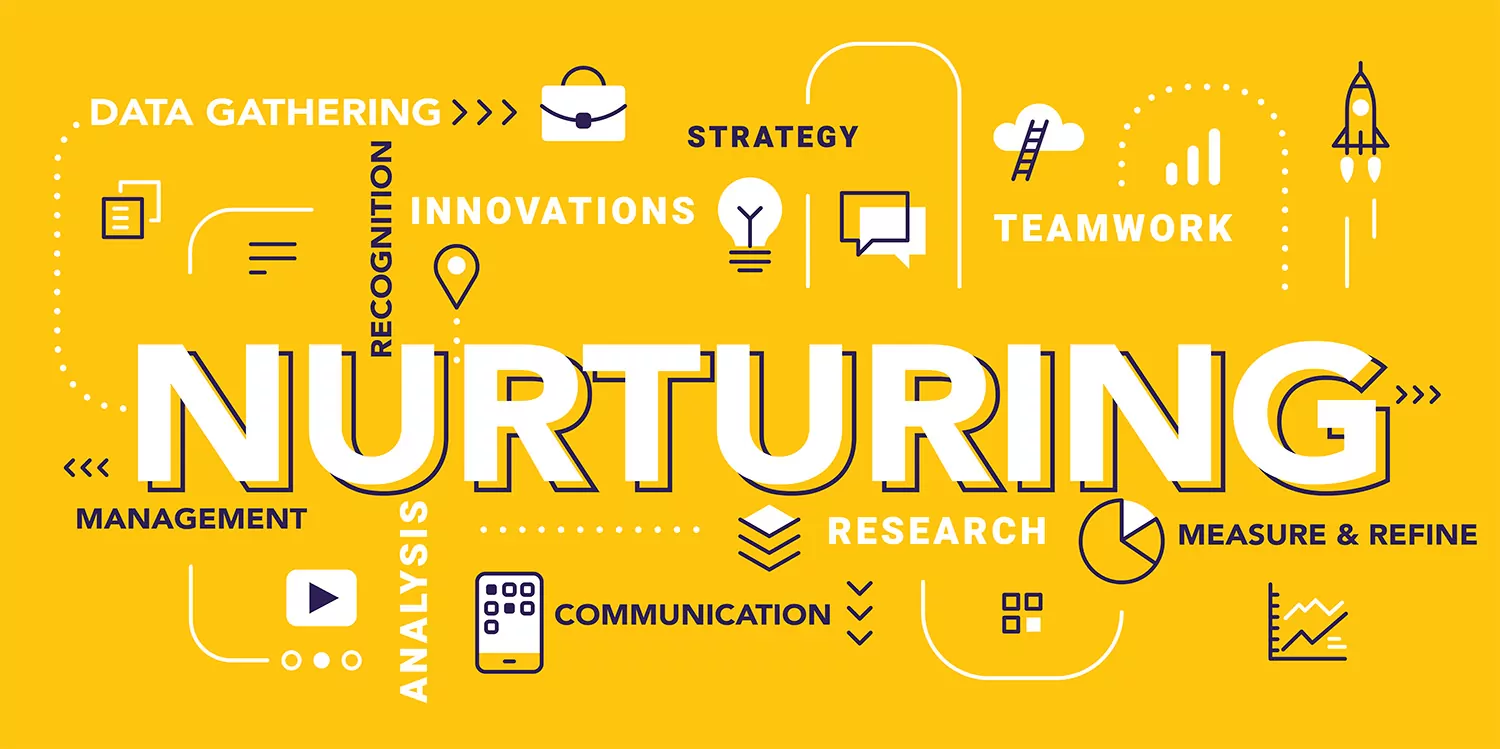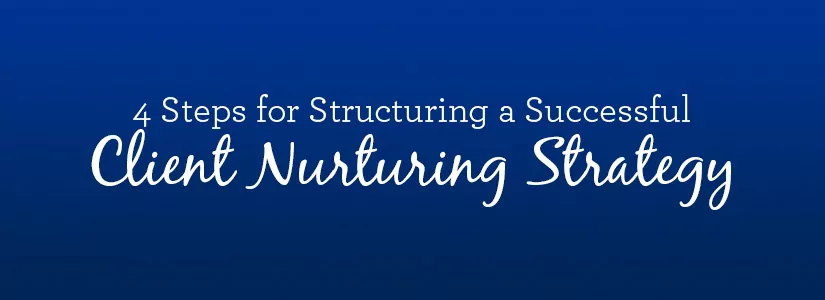The best intentions won’t make your client nurturing program successful without a well-thought-out strategy that focuses on efficiency and effectiveness. Make the most of your team’s time and resources in creating a client experience that optimizes engagement.
About four years ago, one of my strategic partners observed his client slogging through the process of creating several hundred gift packages for his company’s clients. He described the scene as chaos, with absolutely nowhere to walk or sit amid a sea of packaging materials and products that “leaked” from the conference room to the hallways and any vacant space. My partner knew this was not an efficient use of the marketing team’s time and resources, so he created an introduction.
I met Emma and her marketing coordinator, Ruth, and we talked about how they were nurturing their client relationships. These two young women were working feverishly, but I could see how much more they could accomplish with a bit more strategy and the support of outside resources.
Over an elongated lunch, I learned more about:
- how they made decisions for using resources (marketing activities, time, and budget) that they had available to them;
- their company’s growth opportunities within their industry; and;
- their company brand ethos.
With those insights, we set up a meeting with their senior leadership to strategize with the marketing team and key decision-makers and create an efficient structure for staying connected with key stakeholders, using efficient, meaningful people-centric practices.
A few weeks later around their conference room table, we talked about the company’s operations, planned growth, go-to-market strategy, and some of their pain points specific to connecting and nurturing relationships with clients and prospects. The marketing team and senior leaders identified several barriers that would prevent the current marketing team from taking on more work:
- We love to show appreciation, it is one of the ways we show we care and we put our customers first. With our growth, it is harder to know people as and who will appreciate what.
- We believe in investing in relationships, however, we’re investing a lot of time and effort in finding just the right thing.
- Many people (project managers, leaders, marketing) send expressions of thanks, without consistency in how we express gratitude. We’re all over the board.
- We write a blog and share it on social channels, without a consistent “voice” and how we distribute it across digital platforms.
- We don’t track people from our team connecting with clients on a personal level—a happy hour, lunch, coffee. This lack of information coupled with the marketing team sending an expression of appreciation, we could be over- or under-investing in our client nurturing effort.
- Face-to-face conversations with our clients and prospects lack intentionality. How could we learn more to know these key people better?
- Sometimes we’re overwhelmed with so many other marketing activities, requests for proposals are late, jeopardizing new project opportunities.
The discussion revealed additional gaps in the company’s process to nurture relationships. When there was finally silence, I asked if there were interest in developing a structured, repeatable marketing system that would be more efficient and effective. The immediate response was to take the next step. We began to collaboratively build objectives that would allow the marketing team to take on more with their current headcount.
We agreed to work directly with the marketing team and bring in senior leaders as necessary. When I outlined the objectives and the areas we would need to touch, I could see Emma and Ruth becoming overwhelmed. I asked them to trust me. They were happy they did.
Over the next four months, we built the system and developed training modules shared with others in the company. During a 30-day soft launch, project managers, field personnel, and office administration used the modules. This approach was pivotal to the plan’s success. Although led by the marketing team, everyone from senior leaders to individual contributors communicates and connects with clients and prospects.

Four Key Steps to Structuring Your Marketing Mix
- Gather Data – not all data will provide the insight you need. Be strategic in asking the right questions to glean data that is actionable and powerful to drive the overall objective of your structured marketing mix. Consider things such as:
- Your current marketing actions
- The cadence of those actions
- The balance between direct one-to-one and more overarching communications
- Data Analysis
- What are the gaps and redundancies in your current actions?
- Are there metrics in place to know how marketing actions contribute to business objectives?
- What are your client segmentation criteria (demographic, psychographic, lifestyle traits (hobbies, personal interests), behavior (brand loyalty), spending levels, and longevity?
- What type of work could you outsource to a vetted partner to enable an inside team to accomplish more?
- Develop an Implementation Plan
- Define your client communication channels and frequency.
- Layer in each stakeholder segment and how they should be communicated with by channel, frequency, and initiator.
- Layer in internal roles and responsibilities for stakeholder outreach.
- Layer in outsourced roles and responsibilities for managing your plan.
- Implement training for internal people with responsibilities for client and prospect outreach.
- Determine a plan for tracking outreach.
- Launch Your Implementation Plan
- Link defined objectives with your plan.
- Create qualitative and quantitative milestone markers to evaluate your structure and process.
- Refine your plan based on a regularly scheduled assessment of results.
Sounds simple in theory, but implementation requires focus and time to coordinate client objectives, launch timeline, and documentation. What’s more, the process needs to move at the right cadence. Too much, too fast, and your client will be overwhelmed; too little, too slow, and you risk your client’s trust and continued interest.
A structured marketing mix will consist of six integrated channels of communication to make those who matter feel like they matter.
When you’re ready to create your own structured marketing mix to enhance your client experience, let’s start a conversation. Call 800-742-6800 or email today. For more information and tips for engaging and onboarding stakeholders, sign up for our monthly newsletter. You can find our newsletter sign-up at askhillarys.com.

